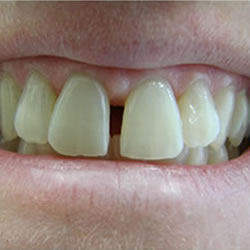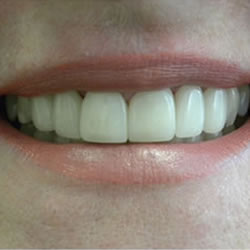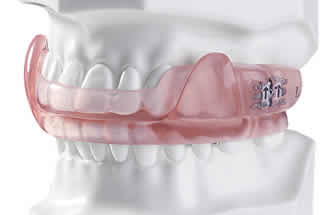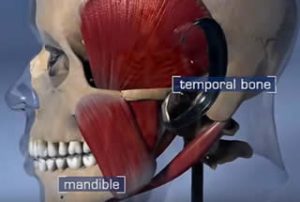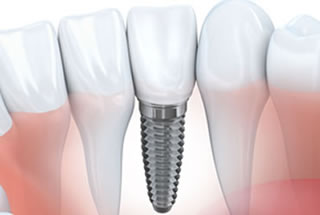
Sedation dentistry, also known as “sleep dentistry,” refers to the practice of calming and relaxing a patient prior to a dental procedure with the use of pharmacological agents. Sedation dentistry began in the late 1700s when a chemist named Humphry Davy began experimenting with inhaled gasses and first observed the analgesic effects of nitrous oxide, commonly known as “laughing gas,” on himself and on dental patients.
In 1844, an American dentist named Horace Wells used nitrous oxide as a dental anesthetic during the extraction of his own molar tooth. Wells made the observation that while he experienced very little pain while undergoing the extraction, he was still fully conscious during the procedure. A few years later, dentist William Morton and surgeon John Warren performed a public oral surgery at Harvard University, demonstrating the analgesic properties of a sulfur-ether compound, further proving that sedation dentistry should be explored further.
For years, trial and error procedures informed doctors of the safety of various levels of pain-relieving gasses. It was discovered that 100% nitrous oxide, when used in prolonged dental cases, could lead to hypoxia, a condition in which the body is deprived of the oxygen it needs to thrive, something that can eventually lead to death. Finally, a Chicago surgeon named Dr. Edmund Andrews began mixing nitrous oxide with oxygen, administering them simultaneously. This allowed for safer analgesic options for both surgical and dental procedures. Ether and chloroform, combined with some nitrous oxide, was later shown to provide deeper sedation for prolonged treatments.
Intravenous (IV) sedation began in the 1960s at the Loma Linda University School of Dentistry in California. Dentists there experimented with IV sedation for the highest level of management for pain, anxiety and fear for dental patients undergoing surgery.
Today, dentists routinely turn to sedation dentistry for their patients to relieve pain, stress and to provide the most comfortable dental therapies as possible. Talk to your dentist to discover the latest sedation dentistry options and to see how they can help you positively experience your next dental procedure.
We treat patients from Toronto and the surrounding area

Do you have apprehensions regarding dental exams or therapies? Do you find yourself worrying about your teeth and concerned about exams? You are not alone. Many people experience anxiety or fear regarding the dentist’s office. You might want to consider sedation dentistry.
Qualified sedation dentists are able to work with you to get the dental care you require without the burden of fear or nervousness that might lead you to postpone work.
Sedation dentistry therapies are overseen and administered by specially trained dentists and dental technicians. These dental professionals have undergone hours and hours of special education in sedation equipment, techniques and medications. These trained individuals are aware of the best sedation options for each patient type, and they can administer them safely and reliably.
If you are thinking about sedation dentistry for your next dental treatment, consider the following:
- How much education does the dentist have related to sedation dentistry? What continuing education programs have been completed that specialize in anesthesia and conscious sedation?
- What organizations does the dentist belong to that provide ongoing education to keep the dentist and staff apprized as to the latest techniques and research? A good sedation dentist is always looking to learn new procedures that can benefit his or her patients, and can do so through professional organizations such as the American Dental Society of Anesthesiology.
- What equipment is in place to monitor a patient’s level of sedation? Sedation dentistry cannot be safely practiced without a pulse oximeter and oxygen equipment. Medications should be on-hand to reverse any rare reactions to the sedation.
It’s your right as a patient to have answers to these and all of your questions before you undergo any dental therapy. Your dentist should be very forthcoming. Having the right information allows you to make the right decisions for you and your dental care. Talk to your dentist today regarding these and any questions you have about sedation dentistry or his or her qualifications. Get the best care you need, and skip the worry!
If you need a dentist in Toronto contact us today

Many types of dentistry procedures such as crowns, bridges, tooth implants, or other invasive procedures require some kind of anesthesia in order to be performed in comfort for the patient. Even a procedure like porcelain dental veneers can be aided by the addition of some kind of sedation dentistry, especially if the patient is experiencing anxiety or fear regarding the treatment. For any patient seeking a more relaxed cosmetic dental experience, sedation dentistry presents several options.
Inhaled sedation, or nitrous oxide, is more commonly known as “laughing gas.” It is inhaled via a mask and is controlled by your dentist. It is a light sedation, and allows you to remain completely responsive and compliant to instruction. Nitrous oxide sedation wears off quickly; because of this, you may be able to drive yourself home after your treatment.
Conscious oral sedation reduces your anxiety while still allowing for responsiveness to requests and directions. Oral sedatives are typically prescribed in pill form, and can be taken up to an hour before your dental procedure. Some dentists believe that taking a mild oral sedative the night before treatment can alleviate anxiety and ensure proper rest. You should not drive yourself home if you have taken an oral sedative for your dental treatment. You will not be fully alert.
IV sedation is also known as “sleep dentistry.” It provides the most relaxed dental experience, allowing you to be deeply sedated while never completely unconscious. A natural effect of the drugs is full or partial memory loss of the time during its use, so you may have no memories of your procedure. You should never drive following IV sedation, and you may not be fully alert for several hours. Plan to go home, rest, and sleep.
Your dentist wants you to be comfortable throughout your dental therapy and will know which sedation dentistry option is right for your particular dentistry procedure. Talk to your dentist today about any concerns you have regarding your treatment so that you may have the most positive, pain and anxiety-free experience possible.
We look forward to seeing you in our Toronto dental office

Intravenous, or IV, dental sedation offers patients a way to remain completely relaxed while undergoing dental procedures. Those with dental phobias, severe anxiety, special needs, or other issues are able to obtain necessary treatment instead of avoiding trips to the dentist. IV sedation is an effective and safe process that makes you very relaxed and unaware of the dental work being done. You won’t even remember anything about treatment, allowing you to come away with a positive experience.
Becoming a candidate:
IV medications are delivered directly into your vein through a needle in your arm. You’ll need to schedule an appointment to discuss sedation with your dentist, and disclose any medical conditions and medications (both prescription and over-the-counter) you are taking. A thorough examination will be conducted, X-rays or other tests may be performed, and a discussion of all aspects of IV sedation is necessary to determine if this treatment is right for you.
Going to your appointment:
Arrange for a friend to drive you to and from your appointment, because you may feel drowsy at first. It is advised not to drive, return to work or school, or make important decisions for a day following sedation so that the medication has time to completely wear off. In some cases, your dentist may give instructions for fasting prior to your procedure.
During your procedure:
Qualified, well-trained professionals will be doing your anesthesia and procedure. You will be monitored the entire time to ensure your safety and comfort. The IV will be placed in your arm, and some patients request an additional method of mild sedation be used if needles are upsetting. When the dental work is complete, the sedation will be reversed and you will become more alert to go home.
Recovering from your appointment:
Follow all of the instructions from your dentist about after-care, which will vary depending upon your procedure. Any grogginess you might feel from the sedation usually wears off after a few hours, so plan on resting before returning to your normal routine.
We treat patients from Toronto and the surrounding area

Fear and anxiety make dental treatment a challenge for many people. Sedation dentistry offers many options to help patients overcome their fears and experience a more comfortable, relaxing treatment. One of the most common options in sedation dentistry is oral conscious sedation. Here are some common questions about oral conscious sedation and answers about how it can help alleviate your stress about undergoing dental procedures:
- What is oral conscious sedation? This type of sedation utilizes a combination of pain relievers and sedatives to induce an altered state of consciousness that allows you to undergo all kinds of dental treatment in a totally relaxed and comfortable state.
- Am I asleep during the procedure? Patients who receive oral conscious sedation are drowsy but awake and able to communicate with their dental professional. This type of dental sedation allows you to be relaxed but aware.
- Will I feel pain during the dental treatment? With oral conscious sedation, you will most likely not feel any discomfort or pain.
- Is oral conscious sedation safe? While it is considered safe for most patients, your dentist will evaluate your medical and dental health to determine if you are a good candidate for oral sedation.
- Can I resume normal activity immediately after receiving oral sedation? Because you may still be slightly drowsy and under the effects of the medication, it is advised that you arrange to have a friend or family member drive you home after treatment.
- Will I have bad memories of my dental treatment? With oral conscious sedation, you will feel completely relaxed and have little to no memory of your dental procedures.
Thanks to sedation dentistry options like oral conscious sedation, you no longer have to dread or postpone necessary dental treatment due to fear and anxiety. Contact your dentist to find out how they can help you conquer your fears and restore your oral health with this gentle approach to dentistry.
We look forward to seeing you in our Toronto dental office

What defines sedation dentistry?
Sedation dentistry is any type of dentistry treatment performed in conjunction with the patient being given some kind of anesthetic. Sedation dentistry can give the dental professional the freedom to perform all types of therapies while the patient is completely comfortable and pain-free.
Is sedation dentistry safe?
While utilizing sedation dentistry, you will be monitored by your dentist at all times. Age, medical conditions and existing medications can all be factors to consider when choosing a type of sedation.
Is conscious sedation the same thing as sedation dentistry?
Conscious sedation is the term for a type of treatment a patient receives that allows the patient freedom from fear, anxiety and pain while still remaining aware enough to follow simple instructions given by the dentist’s team. Conscious sedation can be administered on several levels, customized to each particular patient’s anxiety level.
How is conscious sedation administered?
Conscious sedation can be administered orally, inhaled or by IV. Oral sedation is delivered via a pill. Most patients take the pill one hour prior to the treatment. Some choose to take a pill the night before to be certain to get a good night’s sleep. Inhaled sedation is commonly known as laughing gas, and can allow you to feel as though you are drifting away during a treatment. Deeper, faster-acting sedation can be achieved through intravenous sedation.
Should I choose sedation dentistry?
Sedation dentistry is a choice open to anyone who is in good physical shape who has fear, anxiety or stress about an upcoming dental treatment. If you find yourself dreading a visit to the dentist to get necessary work completed, be honest with your dentist about your fears and ask about all of the ways sedation dentistry can help you get the work you need, in comfort and ease.
We look forward to seeing you in our Toronto dental office







 E-Mail Us
E-Mail Us  416-595-5490
416-595-5490